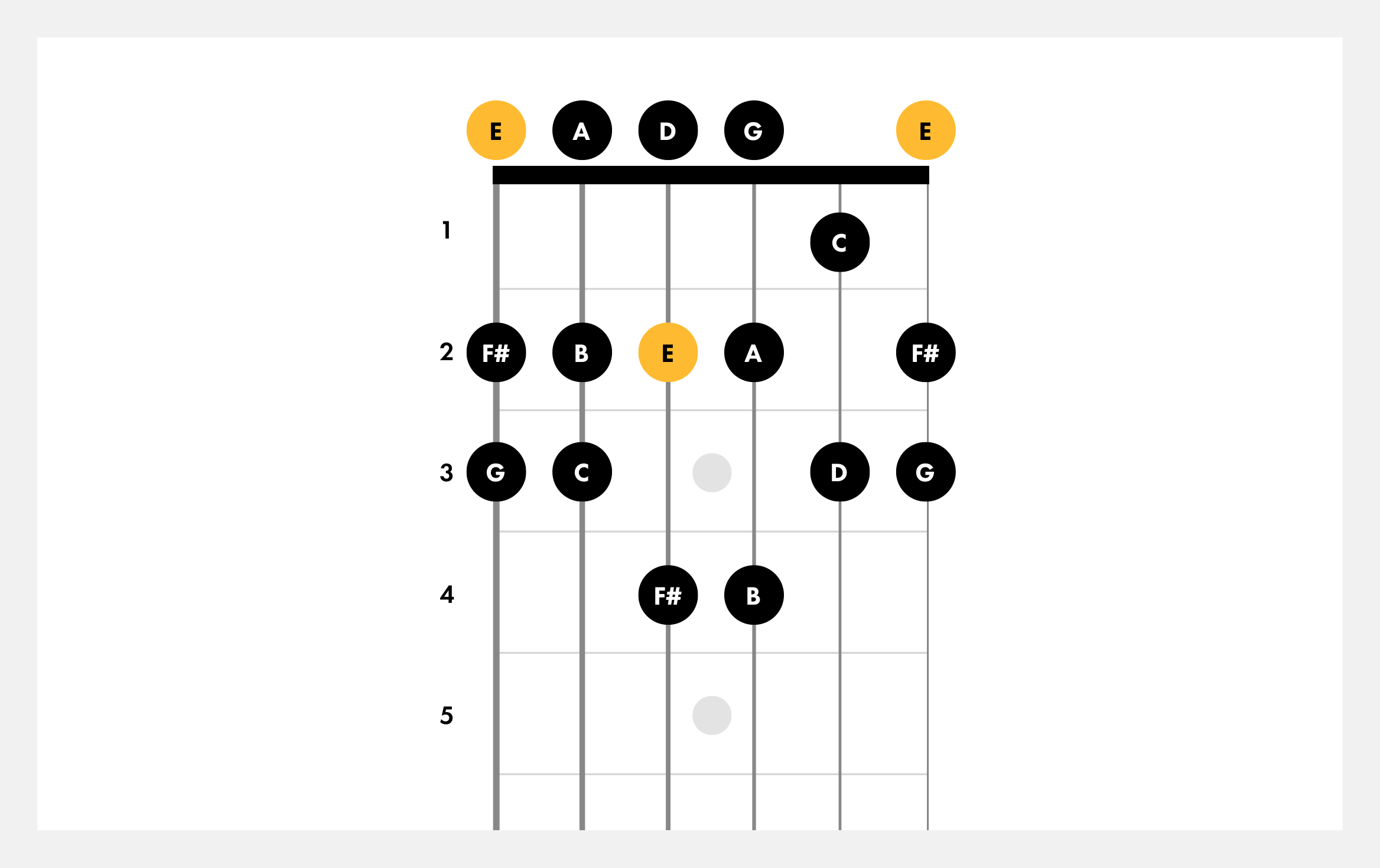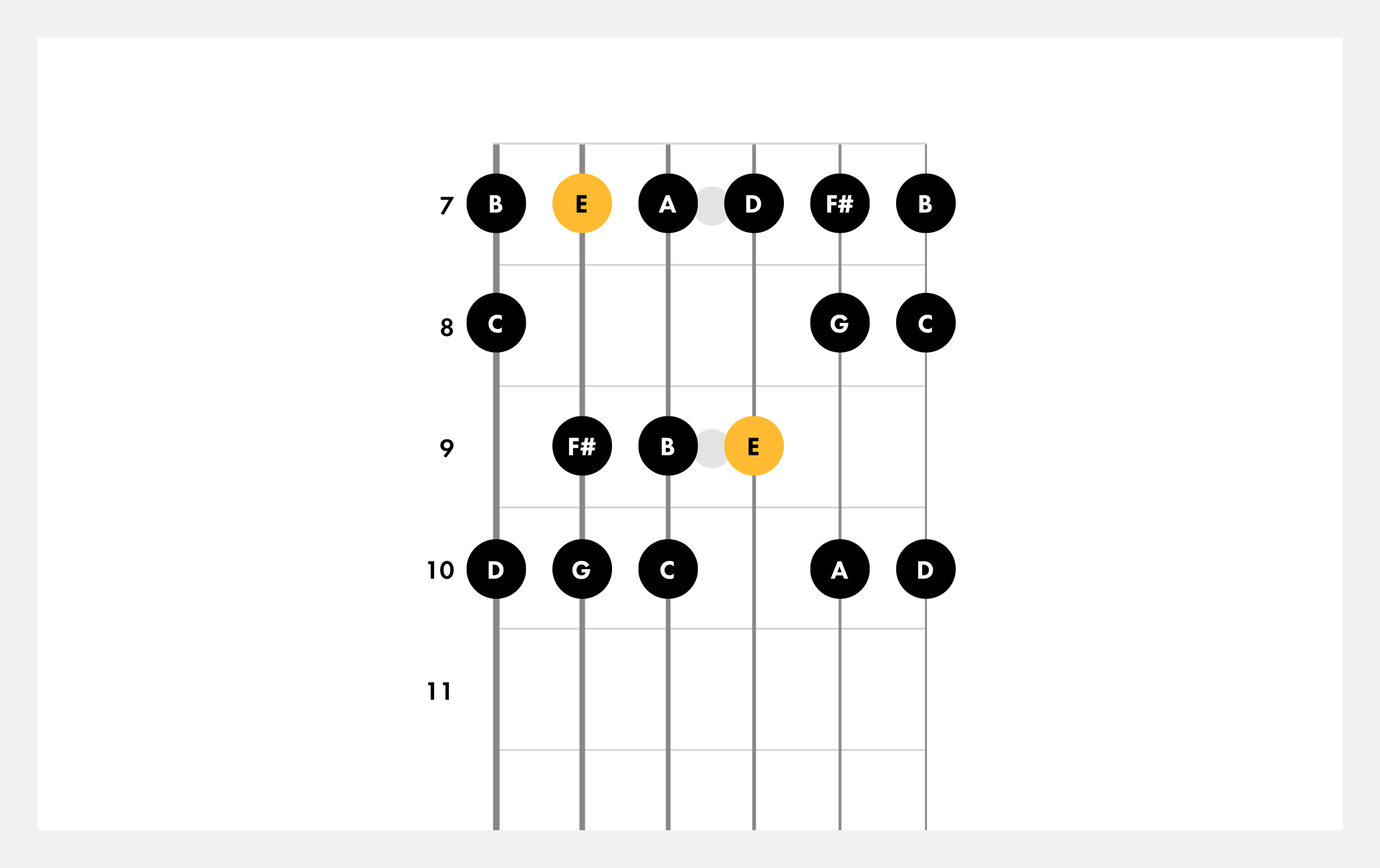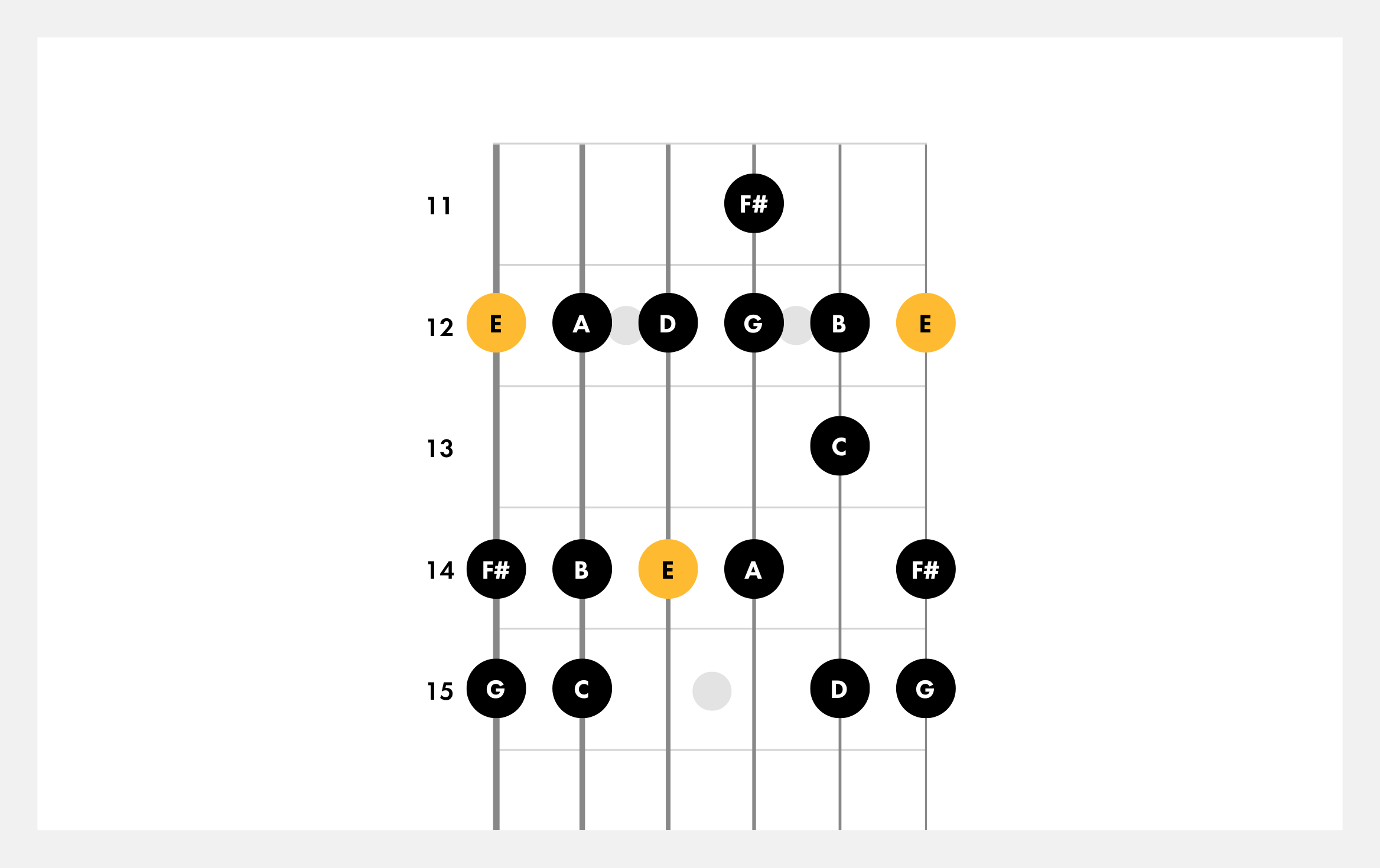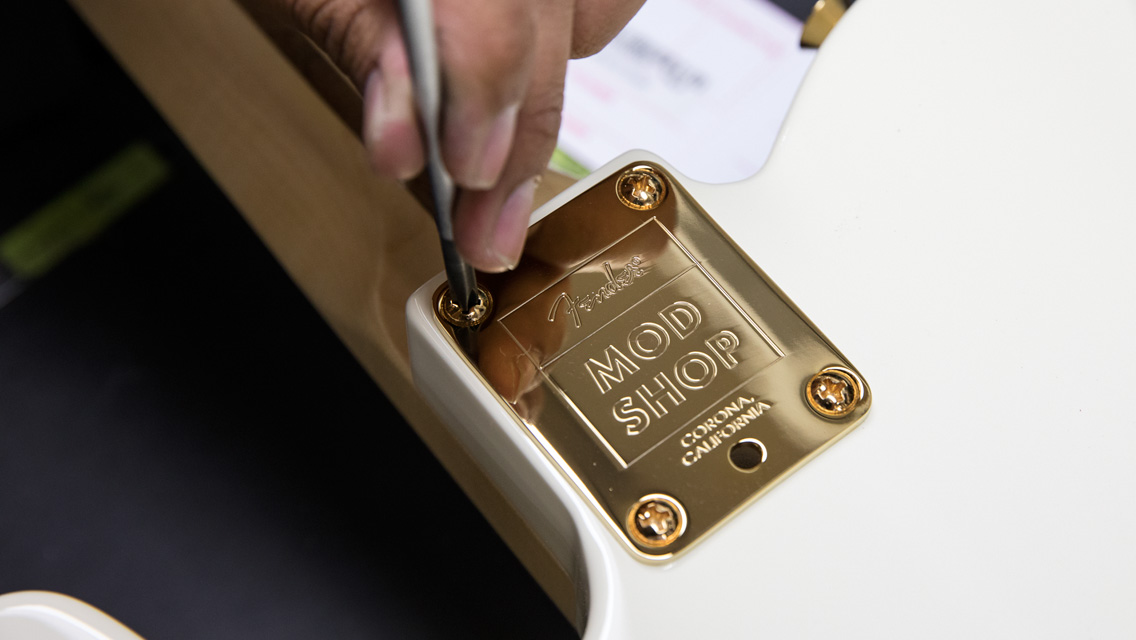
Sections
Lesson: Playing the E Minor Scale on Guitar
The E minor scale is an excellent way to learn some new sounds on your guitar. Right away, you’ll notice that the E minor scale sounds sadder and darker than bright and cheery major scales. This musical mood swing comes down to the difference between major and minor.
Major and minor chords evoke different emotions thanks to one small change in the scales they’re based on. Simply lowering the third note of any major scale one half step gives you that melancholy minor sound.
In this lesson, you’ll learn the notes in the E minor scale, as well as the hand and finger positions on your guitar. Building on these basics, we’ll cover chords using the same notes, allowing you to play a harmonized E minor scale. Knowing which chords complement the E minor scale gives you the power to understand lead and rhythm guitar parts written in this scale.
E Minor Scale Notes
The E minor scale is made up of seven notes:
E
F#
G
A
B
C
D
The hashtag symbol next to the F tells you that the F is “sharp,” one fret (or a half-step) higher than the natural note F.
Like every scale on the guitar, you can play the E minor scale in several different positions. Let’s take a look at each one and the hand and finger positions you’ll use to play each note.
Don’t miss out!
Be the first to know about new products, featured content, exclusive offers and giveaways.
E Minor Scale Positions
One way you can learn to play the E minor scale is by using the guitar neck scale diagrams below.
On these diagrams, the numbered dots show you where your fingers will go on your guitar’s fretboard to play the scale. Each finger of your fretting hand has a corresponding number that shows you the proper finger placement to play this scale. Here’s how they are numbered:
Index finge
Middle finger
Ring finger
Pinkie finger
White dots in the diagram represent open strings, which you play without fretting.
Like all guitar scales, you can play the E minor scale in several different positions. Each position requires its own particular finger placements and hand positions.
In this lesson, we’ll look at four E minor scale positions.
Open Position
To play the E minor scale in open position, you’ll only need to put your fingers on the first four frets of your guitar. Use your index finger to play notes on the first fret, your middle finger to play notes on the second fret, your ring finger to play notes on the third fret, and your pinkie to play notes on the fourth fret.

2st Position
To play this E minor scale, position your hand up one fret on the guitar. Now your index finger will play notes on the second fret, your middle finger will play notes on the third fret, your ring finger will play notes on the fourth fret, and you will use your pinkie to play notes on the fifth fret.

7th Position
Playing the E minor scale in seventh position requires positioning your hand up to play notes on the seventh, eighth, ninth, and tenth frets as shown in the diagram below.

12th Position
To play the E minor scale in 12th position, you’ll play notes on the 12th, 13th, 14th, and 15th frets as shown in the diagram below.

Index finger on the 1st fret of the B (2nd) string
Middle finger on the 2nd fret of the G (3rd) string
Ring finger on the 3rd fret of the D (4th) string
E Minor Scale Chords
Now you’re ready to start pairing the E minor scale with guitar chords. Just as there are seven notes in the E minor scale, we’ll look at seven chords that pair with each step in the scale. We’ll touch on a bit of the music theory behind each chord, and we’ll also share diagrams to help you learn to play each chord in the E minor scale.
E Minor
As we mentioned at the beginning of this lesson, a minor chord is only one note away from the major chord. Where a major chord is built from the root, or first, note of the scale, the major third, and the fifth, a minor chord is made up of the root, the minor third (which is one half-step flat from the major third), and the perfect fifth. The notes in the E minor chord are E, G, and B. Learn how to play the E minor chord here.
F# Diminished (F# dim)
A diminished chord consists of only two notes, the minor third and the diminished fifth. Unlike major and minor chords, the diminished chord does not contain a root note. As a result, these chords have an unsettled sound. The notes in the F# diminished chord are A and C. Learn how to play the F# diminished chord below.
G Major
The G major chord is made up of the root G, the major third B, and the perfect fifth D. Learn how to play the G major chord here.
A Minor
The A minor chord is made up of the root A, the minor third C, and the perfect fifth E. Learn how to play the A minor chord here.
B Minor
The B minor chord is made up of the root B, the minor third D, and the perfect fifth F#. To play this chord on your guitar, you’ll need to study barre chords. Learn how to play the B minor chord here.
C Major
The C major chord consists of the root C, the major third E, and the perfect fifth G. Learn how to play the C major chord here.
D Major
The root D, the major third F#, and the perfect fifth A make up the D major chord. Learn how to play the D major chord here.
C Major Scale Exercises on Guitar
To wrap things up, let’s try some E minor scale exercises. Before you dig in to these exercises and drills, make sure you’ve warmed up by playing the E minor scale slowly in each position, as well as the chords of the E minor scale.
As you’re learning, it’s best to start slow and focus on getting each note to sound clear while using the proper finger positions. Once you’ve built up dexterity and strength, you’re ready to start playing faster.
E Minor Scale Ascending and Descending
One of the best ways to memorize the E minor scale is to simply practice going up and down the scale in each position. Start with the root note and go up the scale: E, F#, G, A, B, C, D. Then, work your way back down the scale: D, C, B, A, G, F#, E.
If you'd like to learn how to play even more chords, browse Fender Play's chord library, learn about chord types, and find tips on how to master them.
If you're not a member yet, sign up for a free Fender Play trial!


